#middle ages
Text
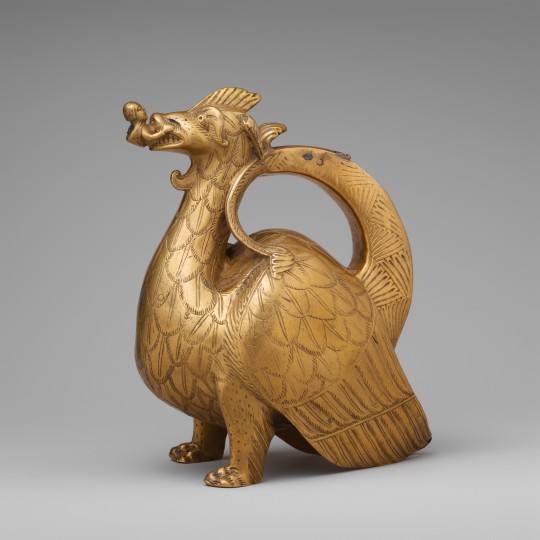
Brass aquamanile in the form of a dragon, Northern Germany, circa 1200
from The Metropolitan Museum of Art
160 notes
·
View notes
Text
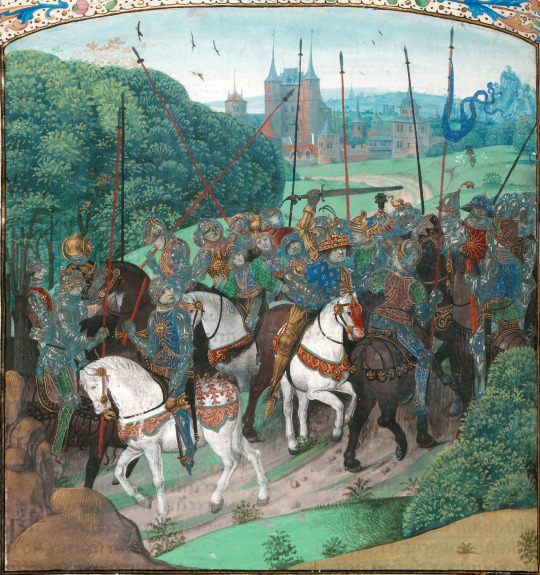
Madness of Charles VI: crossing the forest of Le Mans on an expedition against Pierre de Craon, the king, brandishing a sword, mistakes the members of his retinue for enemies and attacks them.
— Froissart's Chronicles
#charles vi#king#france#madness#mad#insanity#forest#le mans#french#medieval#middle ages#knights#knight#armour#jean froissart#chronicles#chroniques#hundred years war#art#history#europe#european#house of valois#valois#miniature#illuminated manuscript#mediaeval#sword
75 notes
·
View notes
Text

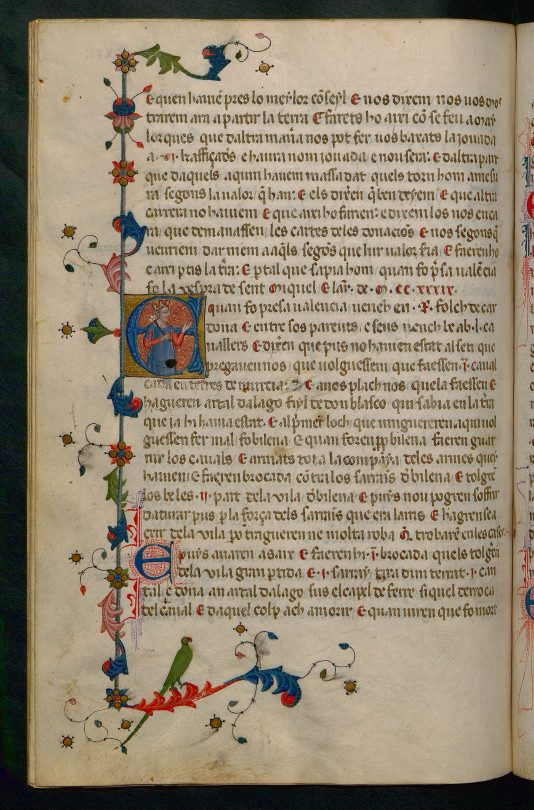
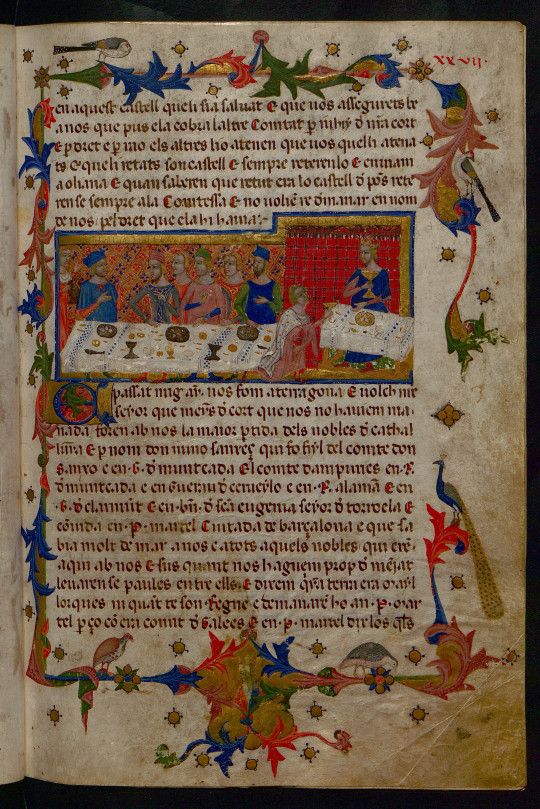
Chronicle of the King James I (Jaume I) of Catalonia-Aragon (1208-1276). Manuscript copy written in the year 1343 in Poblet, Catalonia. University of Barcelona library.
James I's chronicle titled Llibre dels fets ("Book Of The Deeds") is regarded as the first secular chronicle-autobiography attributed to a Christian king.
#història#jaume i#arts#literatura#history#literature#art history#illuminated manuscript#medieval#middle ages#1200s#13th century#books#books and reading#reading#historical#artifact#europe#catalonia#cultures
36 notes
·
View notes
Photo
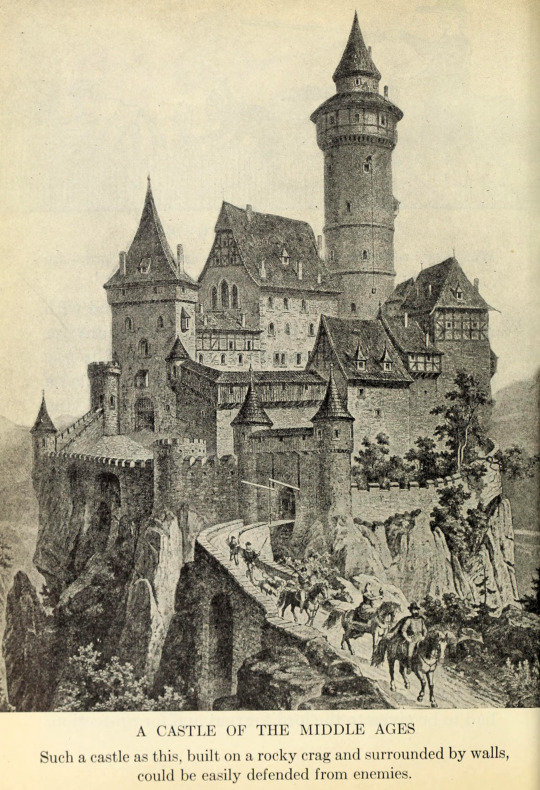
Source details and larger version.
I've collected some rather interesting castle imagery, including several floating in the air.
41 notes
·
View notes
Text

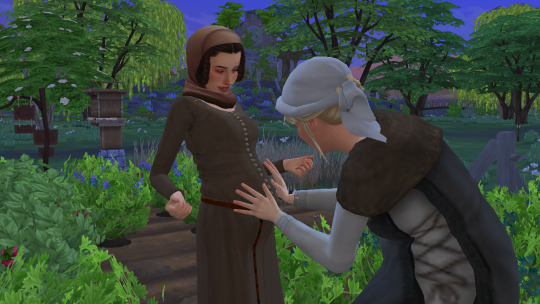
1307
Piritta is with child! She is so excited. This is her first pregnancy. But I must confess, I am so very worried for her and for Matti too. I've lost two of my own now and I know, how painful it is and how powerless you can feel. It has also made me question my beliefs, which might be the worst of all. To lose faith. To lose hope. And with more death, the more you fear. I must stay strong for Piritta and Matti and not show my worries. What happens, happens. Everything is a part of the Great Watcher's plan. That is how my mother sees it. And in that I must trust.
#the sims#the sims 4#the sims 4 legacy#the sims community#sims#sims4#sims 4#sims 4 gameplay#sims 4 legacy#ultimate decades challenge#historical sims#1300s#medieval sims#middle ages#ts4#ts4 simblr#ts4 gameplay#ts4 legacy#sims community#Solja Erkintytär#Piritta Mikaelintytär
16 notes
·
View notes
Text
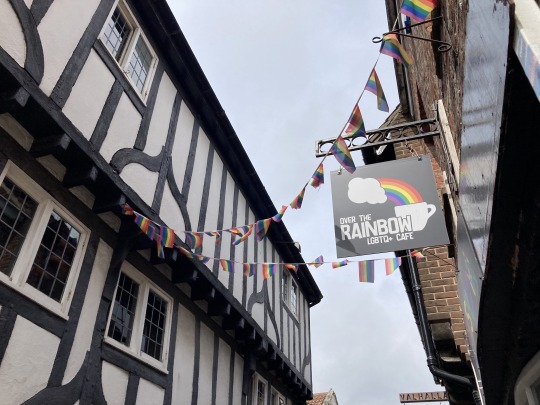
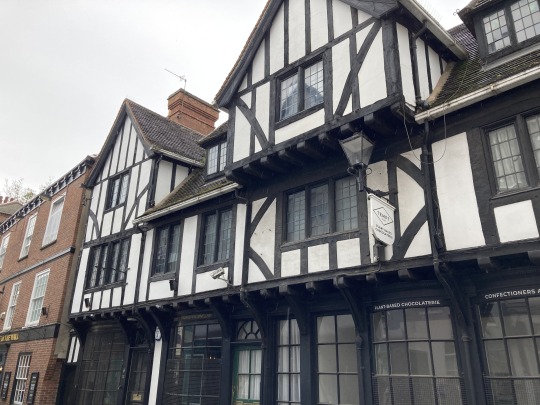
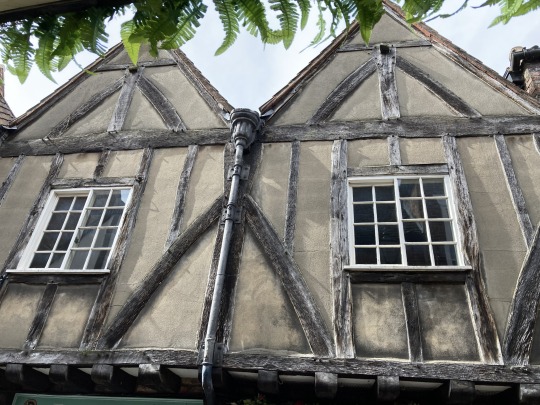

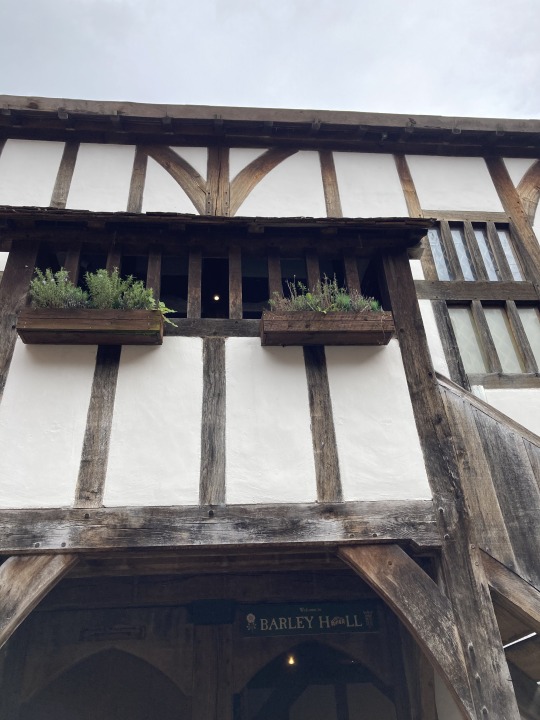
Medieval houses (now shops) in York.
19 notes
·
View notes
Text
A murder mystery film set in a medieval village. After an outbreak of plague, the villagers make the decision to shut their borders so as to protect the disease from spreading (see the real life case of the village of Eyam). As the disease decimates the population, however, some bodies start showing up that very obviously were not killed by plague.
Since nobody has been in or out since the outbreak began, the killer has to be somebody in the local community.
The village constable (who is essentially just Some Guy, because being a medieval constable was a bit like getting jury duty, if jury duty gave you the power to arrest people) struggles to investigate the crime without exposing himself to the disease, and to maintain order as the plague-stricken villagers begin to turn on each other.
The killer strikes repeatedly, seemingly taking advantage of the empty streets and forced isolation to strike without witnesses. As with any other murder mystery, the audience is given exactly the same information to solve the crime as the detective.
Except, that is, whenever another character is killed, at which point we cut to the present day where said character's remains are being carefully examined by a team of modern archaeologists and historians who are also trying to figure out why so many of the people in this plague-pit died from blunt force trauma.
The archaeologists and historians, btw, are real experts who haven't been allowed to read the script. The filmmakers just give them a model of the victim's remains, along with some artefacts, and they have to treat it like a real case and give their real opinion on how they think this person died.
We then cut back to the past, where the constable is trying to do the same thing. Unlike the archaeologists, he doesn't have the advantage of modern tech and medical knowledge to examine the body, but he does have a more complete crime scene (since certain clues obviously wouldn't survive to be dug up in the modern day) and personal knowledge from having probably known the victim.
The audience then gets a more complete picture than either group, and an insight into both the strengths and limits of modern archaeology, explaining what we can and can't learn from studying a person's remains.
At the end of the film, after the killer is revealed and the main plot is resolved, we then get to see the archaeologists get shown the actual scenes where their 'victims' were killed, so they can see how well their conclusions match up with what 'really' happened.
#film ideas#plotbunny#murder mystery#detective stories#period dramas#middle ages#history#archaeology
19K notes
·
View notes
Text
“Every Italian noble in the medieval commune era” - ENGLISH SUBTITLES
20K notes
·
View notes
Text
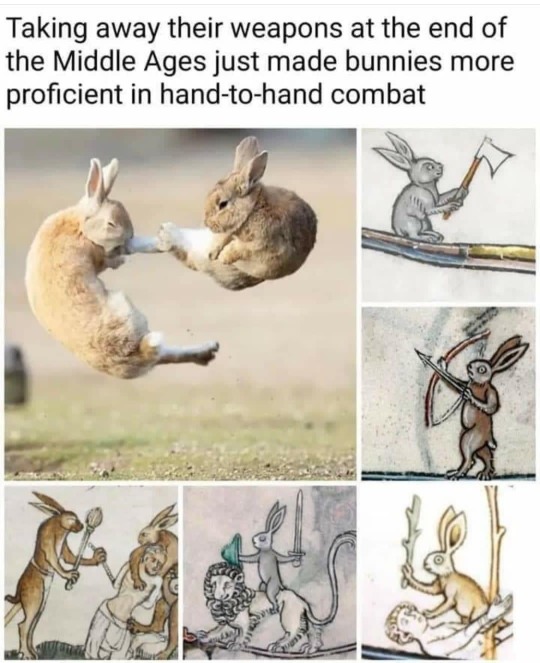
17K notes
·
View notes
Text
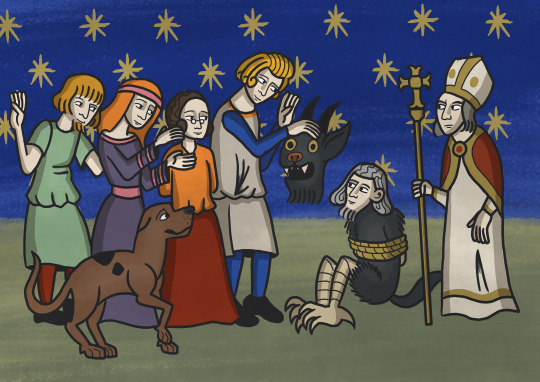
Medieval Scooby
70K notes
·
View notes
Text

Gold ring with cameo of Pan, Byzantine, 12th century AD
from The Walters Art Museum
194 notes
·
View notes
Text

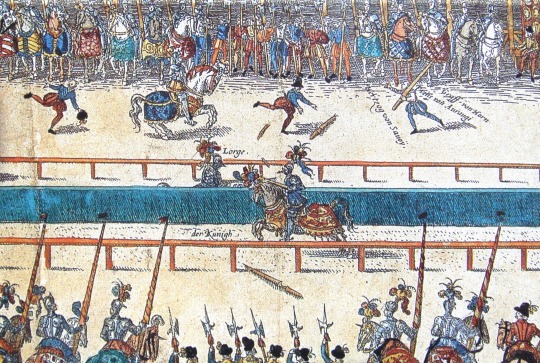
Henry II of France mortally wounded - The Fatal Tournament between Henry II and Count of Montgomery (Lord of Lorges)
by Frans Hogenberg
#tournament#jousting tournament#death#henri ii#henry ii#king#france#french#gabriel de lorges#count of mongomery#scottish#art#frans hogenberg#renaissance#middle ages#medieval#knights#knight#armour#joust#jousting#lance#history#europe#european#montgommery
65 notes
·
View notes
Text
LAZAREVIC SISTERS IV
Princess Teodora Lazarevic
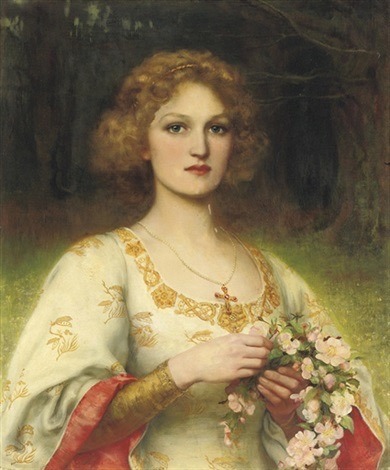
Early Life
She was likely born after 1366 and before 1371 as Princess Teodora Lazarevic, the fourth child and daughter of Lazar and Milica of Serbia. Like her elder sisters she was likely born in Prilepac and later moved to Krusevac.
Though it is unkown if Teodora was a fanatic of the arts as most in her family, the constructions in Krusevac ended around 1377, so she mostly had time for various branches of resources for entertainments to watch merchants, craftmans and entertainers perform at her father’s court or at the town squares.
She was likely closer to her younger sister; Olivera, as in the late 1380s they were the only unmarried daughters left of the royal couple.
However her marital status did not remain chaste for much longer.
Marriage to Nikola II Garai
Like many of her sisters’ previous marriages this one was another political tool of their father; Lazar of Serbia.
At the beginning of Lazar’s reign he acted as a vassal for the Kingdom of Hungary until he eventual got a way to get his state annulled away from the vassalage.
However Lazar still wanted to remain informed of King Sigismund, his thoughts and diplomatic plans. As a result, he married one of his youngest daughters to an assiociate of the then monarcch, Nikola II Garai.
Nikola II Garai was a Roman Catholic Ban of Masco and Hungarian Palatine. It is believed the two were wed after 1386 and before 1389. It is also possible that Teodora, who was an Orthodox Christian up until her marriage took “Helen” as her name of conversion.
Though no information has been recorded nor preserved about the intimacy of their union, Nikola proved himself to be a reliable son-in-law as in 1389-a short time before the Battle of Kosovo-he convieced King Sigismund to abondon his plans to return Lazar into some sort of vassalage, and that same year the monarchs “reconciled” through the mediation of Nikola.
Despite the divide in sources about the maternity of two of Nikola’s children, the noble couple most likely share two children with eachother, the eldest and Nikola’s namesaker; Nikola III Garai, and a daughter called Katerina Garai. Their date of births are unknown.
From 1390 to 1402, Nikola was promoted and served as the Ban of Croatia and Dalmatia. As a result of this, he was transfered to another location, it is possible and probbale that Helen moved with him.
Later Life
We have no information about the later life of Helen, she passed away between 1396-1405, because by 1405 her widowed husband had remarried a woman named Anna with whom he shared a few more children with.
Her reason of early death is unknown. Compared to the rest of her family she died quite young, still remaining in her 30s. The Lazarevics are deemed quite healthy, tall, and beautidul so her reason of death might have been something else. Even if she was in her late 30s, it is still quite a young age for a aristocrat woman to pass away at.
{While looking for her reason of death, I couldn’t find an outbreak of the plague or a fatal virus in the location she occuped when she was alive, so more probable her reason of death might be childbirth, or pregnancy complications, or perhaps Helen always had a fragile dealth.}
Issue
Nikola III Garai
Katarina Garai
( Sources: “КЋЕРИ КНЕЗА ЛАЗАРА ИСТОРИЈСКА СТУДИЈА ПОГОВОР” by Jelka Redep, Dve srpske sultanije : Olivera Lazarevic (1373-1444) : Mara Brankovic (1418-1487) by Nikola Giljen, http://istorijska-biblioteka.wikidot.com/art:teodora-kci-kneza-lazara )
#Lazarevic Dynasty#Lazarevic#14th century#15th century#middle ages#medieval times#arranged marriage#Roman Catholic#Serbia#Moravian Serbia#Kingdom of Hungary#History#geology#Ban#Princess#Lazar of Serbia#Nikola II Garai#Nikolagarai#Diplomacy#Illustration#Teodora Lazarevic#TeodoraLazarevic#Helen Garai#art#classical art#teodoralazarevic
35 notes
·
View notes
Text

24K notes
·
View notes
Text
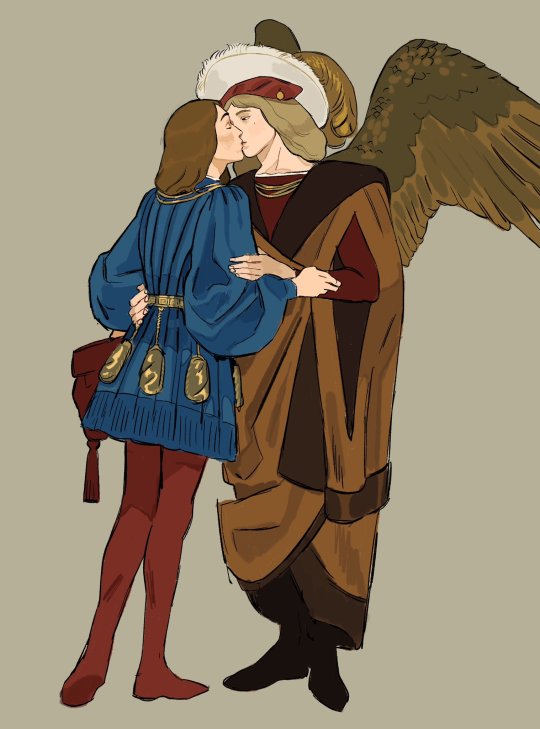

L'amant et l'Amour
13K notes
·
View notes
Text

Hellelil and Hildebrand (The Meeting on the Turret Stairs), Frederic William Burton, 1864
#art#art history#Frederic William Burton#historical painting#Middle Ages#medievalism#Irish art#19th century art#Victorian period#Victorian art#watercolor#gouache#watercolor on paper#National Gallery of Ireland
2K notes
·
View notes